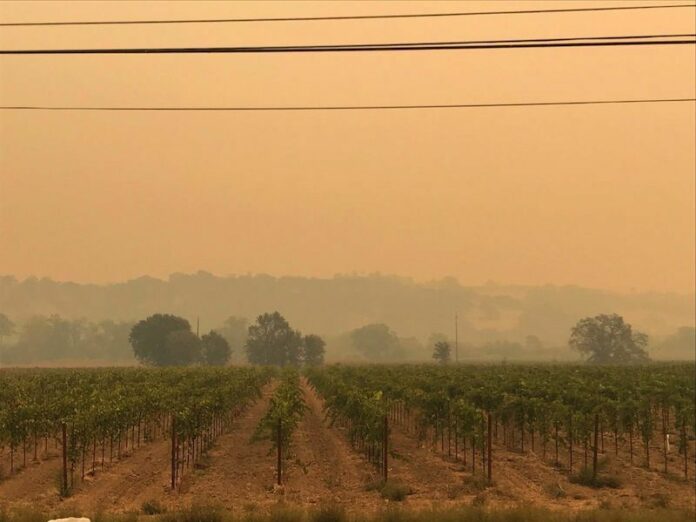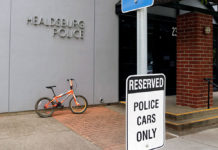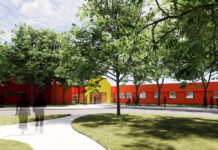The planning process for Cloverdale’s Community Wildfire Protection Plan (CWPP) — a plan that’s supposed to outline how to reduce the threat of wildfire in the community — is underway. The road ahead for the plan includes multiple community meetings and input sessions to help nail down how the CWPP can best serve Cloverdale.
“As we know, the significant impact of wildfires (exist) really outside the boundaries of the city, so this is a regional planning effort that includes the unincorporated area around the city, but also city interests as well as our various partners,” City Manager David Kelley said during a July 28 Cloverdale City Council meeting.
A CWPP committee of about 30 people are heading up the plan creation process, according to committee co-chair Susie Cummings, who lives in Del Webb.
“What we really want to try to do is develop a strategy around wildfire preparedness. In particular, we want to focus on wildland interface, as well as the intermix, which are two critical areas relative to wildfire preparedness. As we all know, the Cloverdale Fire Protection District is surrounded by both,” said Joel Holland, general manager of Wildfire Services, one of the consultant firms helping with the CWPP.
Additionally, the plan aims to help ensure the protection of the economic and ecological values and resources within the fire district’s jurisdiction.
As part of the effort, one end result of the CWPP will be a StoryMap that exists online and serves as a landing page for all of the information being brought together in the plan — including maps of both vegetation-dense and population-dense areas in town. An example of what the StoryMap might look like is Marin County’s CWPP StoryMap, which can be found here.
According to Holland, community stakeholders help set the priorities for wildfire hazard and risk mitigation.
“The critical part of the CWPP is really stakeholder collaboration,” he said. “That’s the phase we’re in now in terms of building buy-in and building collaboration with various community members, certainly the Cloverdale Fire Protection District is a big part of this, the CERT team helped to form the request for proposals and of course COPE is critical.”
Included in stakeholder engagement is reaching out to city and county officials, as well as homeowners.
“In 2017 when we were on top of the hill fighting the Pocket Fire and saving 200 homes over on the eastern part of the Cloverdale area, the good news is we were successful, the bad news is we were completely unprepared. They had done no vegetation management work in the area at all,” said Geoff Peters, a Community Emergency Response Team (CERT) program manager who’s also been involved in Resilient Cloverdale and other Cloverdale and north county-specific emergency preparedness efforts. “In the five years that have happened since then, I’ve applied for four grants, gotten one of the four and the turn-downs have all said, ‘You don’t have a CWPP. What’s the science behind what you’re saying you need to do?’ This is the solution to that.”
Peters said that with money coming down from both the state and federal governments to help with hazard mitigation and fire preparedness, he wants to ensure that Cloverdale gets its share.
What will community engagement look like?
As part of the CWPP community engagement process, a stakeholder group representing landowners, decision-makers and public representatives will be formed to make core decisions surrounding the development of the CWPP.
Separate from the core group, there will be a series of community workshops, Holland said, in addition to community meetings and CWPP review meetings that look at the community base map, hazard and risk assessments and the conclusion of the project.
A critical step in community engagement, he said, is the Fire and Earthquake Safety Expo planned for this weekend on Aug. 7.
Analyzing what a fire in the city might look like
As part of the CWPP, the committee and its consultants Wildfire Services and Sonoma Technology will be developing a parcel-level fire hazard assessment, which will break down the layout of the city, its housing parcels and its vegetation density to look at what the flame length and potential rate of speed might be for a fire, should it hit part of Cloverdale.
“We’re looking at boundaries in terms of parcels, we’re looking at a 200-foot buffer zone between dense areas of structures and population and really helping plan out the future steps relative to wildfire,” Holland said.
The fire assessment, along with a color-coded map that outlines which areas of Cloverdale present lower, moderate, high and highest hazard potential, will help fire agencies and mitigation partners going forward.
At the parcel level, the CWPP will look at parcels in town and use imaging to outline parcel boundaries, building footprints and draw the footprints of five-foot, 30-foot and 100-foot buffer zones from a structure, relative to the rest of the parcel.
While this process will use GIS (geographic information system) mapping, Holland said it will also involve using both drone technology and boots-on-the-ground efforts led by Wildfire Services to walk areas in Cloverdale.
What’s next?
The CWPP process is just getting started, with the committee and consultants soliciting stakeholder input from now until August. From there, the groups are planning to perform parcel-level hazard assessments and prepare the draft CWPP document from October to December, with the final document and StoryMap being released in either January or February 2022.











